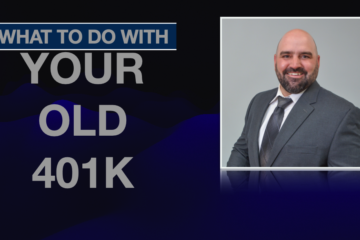Owner or Lender
Mark Triplett | September 12, 2022
Is it better to be an owner or lender? A simple question worth asking yourself.
Would you rather be the owner of your home (a relatively consistent appreciating asset I might add) or would you rather be the lender? As an owner you borrow capital for small down payment to get started. You work towards improving the structure and land so that it becomes more valuable over time. As owner you build equity along the way as home prices appreciate.
The bank on the other hand is the lender. It is putting up the capital so that someone else can buy a home. In return the bank receives a stated rate of interest, and fixed payments each month. The payments received remain the same regardless of how much the value of the home appreciates.
Overtime, which of the two is likely to end up with a greater return on investment? Is it better to be the lender or the owner?
Equity Ownership in a Company
The same question then could be applied to other consistently appreciating assets for example like owning shares of stock in large corporations that produce products or provide services that people need or want to buy.
Is it better to be a lender, a bondholder for example earning a consistent coupon rate, or is it better to be an owner, and equity holder who shares in the profit and growth of the company?
The bond buyer, like a lender, puts up cash to purchase bonds issued by the company wanting to raise capital. The capital raised by the company is used to grow and expand the business. In return the bond holder receives coupon payments. The coupon rate is generally fixed for many years, sometimes decades. No matter how successful the company may be, the bond holder receives the same reward year after year.
On the other hand, owners of a successful company have put up capital to start, run, and grow a business. They either manufacture products or offering services that people are willing and able to pay for. They strive to sell their products or services for more than the input costs. Doing this successful leads to the company making a profit. When a company is profitable and/or has significant growth potential the company becomes more valuable to other investors who might also want to participate in the success. As you can see, there’s more than one way for an equity owner to earn a return.
Investment of One Dollar
What if we simplify things for a moment. Let’s narrow things down to a single dollar.
Let’s say that I aspire to start, run, and grow business. I have identified a void in the marketplace and have a fantastic idea to provide a product or service that is both needed and more importantly wanted to fill that void. We’ve determined that there is a broad consumer base that would pay for the product or service, and the price that consumers would be willing to pay is far more than what it would cost to provide it. It has the makings of a successful business. It will only take one dollar to get the whole thing moving!
However, there’s a problem. I don’t have any money to start the company, or at least not enough to get it off the ground. I’ve got a lot of energy, and a well thought out strategy. I possess a strong sense of where we’re going, but I don’t have enough capital to get us started.
An investor has a dollar, and a desire to earn a return on it. I need a dollar to get going. A match made in investor entrepreneur heaven.
The investor could lend me the money. Assuming the investor desires a fixed income, a consistent flow of cash payments, this might make sense. In that arrangement the investor lends me the dollar for a 3% yield and becomes my debt holder. I make consistent payments of interest for a specific period, and eventually the investor receives the entire dollar back plus the interest payments. Regardless of how successful my company turns out to be, regardless of how profitable and valuable it may become, the lender will not participate in any of it.
I accept the dollar as the issuer of the debt, and now I have the capital I need. However, it will cost me the agreed-upon interest rate for the agreed-upon period. I’m able to start the business, and it flourishes. Soon we’re making products and offering services that people want or need to buy and they’re willing to pay us for it.
Our input costs were a dollar, but we’re able to make 4 dollars as a return. Out of that profit I’ll have to pay taxes and pay the lender the agreed-upon interest rate of 3% on $1, or $0.03. However, the company made a handsome return versus the lender.
Now I have more dollars to continue to operate and expand my business. We use the after-tax revenue to do it again next year. Within five years the business has grown substantially, and we’re making multiples on the original investment.
The company’s success attracts other investors who want to participate in the equity returns of the company. Stock is issued and investors become shareholders providing additional capital to operate and expand the company. As more investors come seeking shares the demand for the shares of the company grows. As a result, the value of the company grows in the marketplace.
Meanwhile, I continue to pay the lender the same interest rate that was agreed-upon for the remaining period of the specified time.
Share Values Fluctuate
Over time the company is subjected to periods of economic expansion and contraction. Some years are more profitable than others. We may even experience a period where the market value of the company declines, and share values drop. During a period when there are more shareholders willing to sell than there are investors willing to buy the price per shares drops temporarily.
Long-term investors may see the short-term share price drop as a bargain and snap up shares at a discount. Afterall, they understand that the company makes products or offers services that consumers need or want to buy and will continue to do so. The company continues marching on.
Through market research and development, it launches new products and services to fill additional gaps in the marketplace. Some fail and some succeed, but overall, the company continues to grow and innovate to become a Large Capitalized company whose stock is included in the Make Believe 300 stock index.
The lender continues to receive a 3% coupon for the remainder of the term of the agreement. Even though the company has made its long-term shareholders wealthy over time, even though the company pays a dividend each quarter to shareholders, the lender receives nothing more, and nothing less than the coupon rate.
Purpose & Timeline
There are times to be a lender, and times to be an investor. You likely have dollars in your portfolio based on the intended purpose and timeline that are more appropriate for lending to others for a specified period for a specified fixed rate return. Money that you may need to use to maintain your lifestyle in the next 3 to 10 years might fall into this category for example.
You likely have other dollars in your portfolio that will not be needed for a decade or longer. Perhaps these are dollars that will be used to ward off inflation and protect your ability to maintain your desired standard of living int the future. These may be appropriate for moderate managed equity market investing.
Perhaps there are dollars in your portfolio that will never be needed, but rather past on as a legacy to your children or grandchildren. These dollars may be more appropriate for equity investing too.
Which would you rather be?
Investors with a long-term outlook and a well-diversified equities portfolio made up of profitable companies that make products or deliver services that consumers want or need to buy are historically rewarded over time. Short-term share price volatility can make some folks feel uneasy. They may even question their decision to buy stocks, especially when they forget what they own.
However, long-term investors remind themselves that they own property. Specifically, that they own a company, or better yet, a portfolio of companies, that make products or offer services to a broad range of consumers around the globe that want or need to buy. It’s much easier for them to look past the near-term volatility and see the longer term rewards of ownership.


